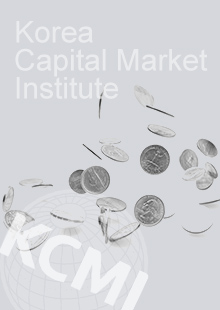Find out more about our latest publications

Improving the Securitization of Mortgage Loan Assets
Survey Papers 05-01 Apr. 06, 2005
- Research Topic Capital Markets
- No other publications.
Korea’s mortgage securitization market underwent drastic changes following the 1997 Asian financial crisis. Prior to the crisis, MBB (Mortgage Backed Bond) was issued in accordance to the Collateralized Bond Obligation Trust Act(CBOT Act). After the crisis, according to the newly enacted ABS Act, private institutions started issuing MBS (mortgage backed securities). With the aim of developing a sound housing finance market, the government established KoMoCo to promote the MBS market. However, MBS issuance lulled due to KoMoCo’s own limited ability to issue MBS, as well as the mortgage market environment that was less than conducive to MBS issuance. To remedy the problem and boost the MBS market, the government passed the Korean Housing Finance Corporation Act, establishing the Korean Housing Finance Corporation (“KHFC”), an institution that enjoys greater public confidence and MBS issuing capacity. Nevertheless, several issues remain to be addressed if the Korean housing finance market is to fully grow into a well-developed market.
First of all, there is a lack of need among lenders to securitize their mortgage assets. This is because most of the mortgage loans extended in the primary market which is composed of borrowers and a lending institution are short-term or adjustable-rate mortgages (ARM) for the following reasons. The first reason is that because Korean borrowers buy houses for investment rather than housing purposes, and therefore prefer loans with higher leverages. Second, because the interest rates have steadily declined after the financial crisis, creating an advantage for ARMs, mortgagers tend to underestimate the risk premium of ARMs. Third, because the domestic housing prices are too high compared to personal incomes, level payments on principal and interest of the mortgage are perceived to be onerous ? a factor that drives down the demand for such loans. Fourth, because a secondary market has yet to develop, banks prefer to make money on loan-to-deposit spreads through short-term loans rather than to raise short-term funds that have to be managed over a long term.
In the secondary market, where the mortgage assets of the primary market serve as underlying assets for securitization, MBS is failing to pick up for the following reasons. First, because mortgages, which are the underlying assets for MBS, are small in scale, the unit cost of securitization tends to be high. Furthermore, the small issuance size of MBS translates into insufficient liquidity and results in higher interest rates. Liquidity is further limited, because Korean mortgage backed securities separate the cash flow into many different tranches with varying maturities, very much like the CMO (collateralized mortgage obligations) in the U.S. Second, it is difficult to valuate MBS, due to underdeveloped long-term interest rate term structure and nonexistent information system regarding prepayments, further driving up MBS interest rates.
The inherent problems of the Korean mortgage market increase the cost of raising capital for long-term FRM (fixed-rate mortgages), so that borrowers are more attracted to short-term or ARM. Therefore, the first step in boosting the long-term FRM and mortgage securitization market is lowering the cost of long-term FRM.
The leading long-term fixed-rate mortgage in Korea is KHFC’s mortgage loan. KHFC’s loan term is 10 years or more and can be repaid at face value without any prepayment penalties after 5 years. If the borrower prepays within the first five years, however, there is a prepayment penalty. Prepayment penalty discourages the use of KHFC’s mortgage loan for investment purposes and mitigates the risk of prepayment. However, restricting non-financially motivated prepayment results in inefficiency. For example, if a borrower needs to relocate due to a new job, the prepayment penalty may be as high as 2%, causing some borrowers to stay in at the previous house and commute